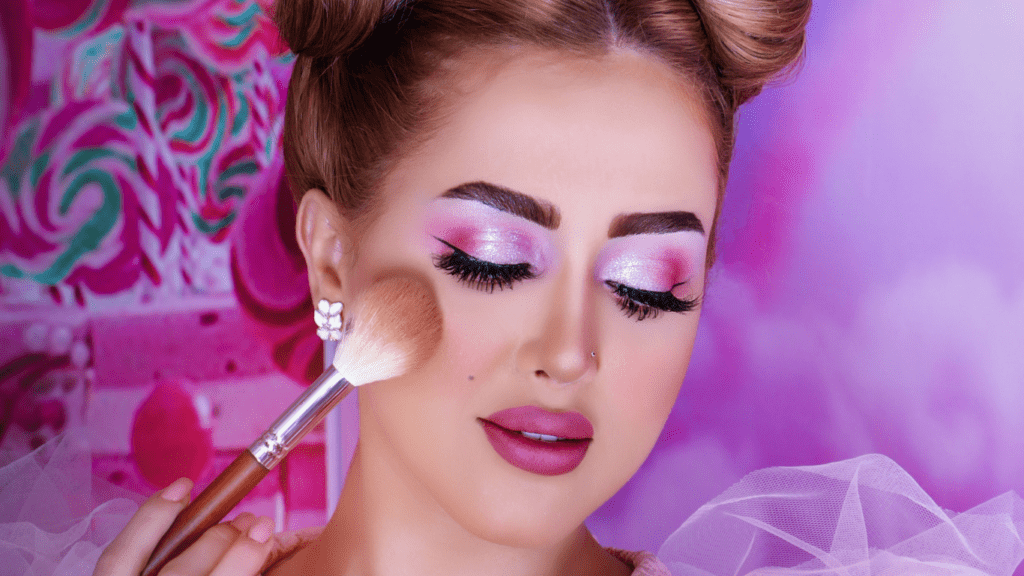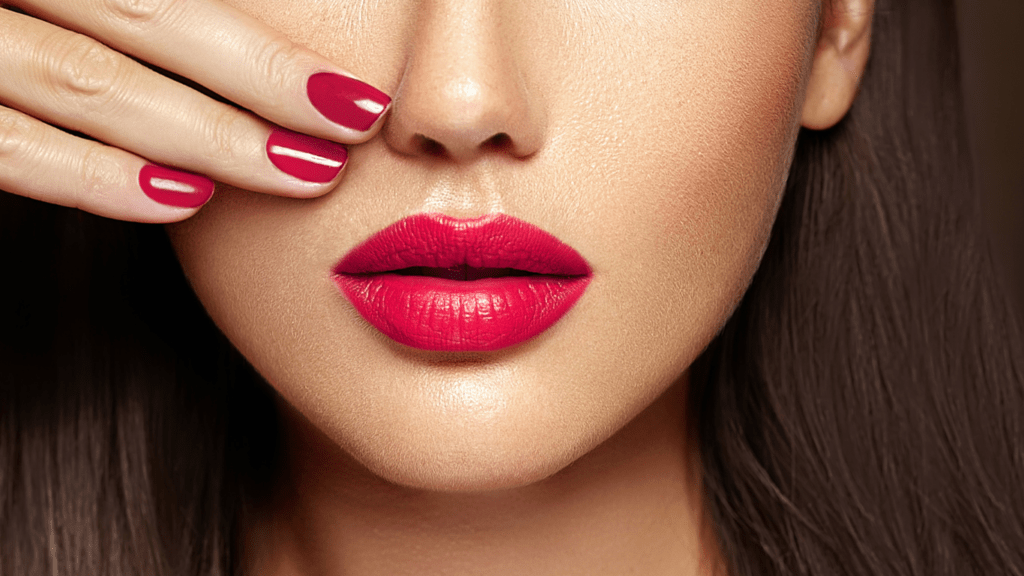Common Foundation Mistakes
Foundation forms the base of any makeup look, and errors here can influence the overall result. I’ll cover some key mistakes to watch for.
Choosing the Wrong Shade
Using the wrong shade of foundation can create a noticeable line on the jawline. Professional artists recommend testing shades on the jawline or neck, not the wrist or hand. Natural lighting is best for accurate color matching. Brands often offer samples, so take advantage of these to find your perfect match.
Skipping Primer
Primer creates a smooth surface for foundation, helping it last longer. Without primer, foundation may settle into fine lines or wear off quickly. Apply primer to clean skin before foundation for a more polished finish. Many primers cater to specific skin concerns like redness or large pores.
Over-Applying Product
Using too much foundation can lead to a cakey appearance. It’s better to build coverage gradually rather than applying a thick layer all at once. Use a damp makeup sponge or brush in thin layers, blending well between applications. A small amount often goes a long way in achieving a natural look.
Eyeshadow Errors
Eyeshadow can enhance your look, but mistakes can diminish its impact. Here are common errors and tips from pros.
Neglecting Eye Primer
Eye primer sets a smooth base for eyeshadow. Skipping it causes creasing or fading. Apply a small amount to ensure lasting wear and better color payoff.
Overblending Colors
Overblending muddies eyeshadow colors, particularly complex shades. Blend minimally to maintain distinct hues. Use a clean brush to soften edges without mixing too much.
Applying Glitter Incorrectly
Misapplied glitter can fall onto the face and cause uneven texture. Use a tacky base like glitter glue for adherence. Tap gently to apply in a controlled manner.
Eyebrow Blunders
Eyebrows frame the face and play a crucial role in balancing facial features. Missteps in eyebrow grooming or makeup can disrupt the overall harmony.
Over-Plucking
Over-plucking thins out the eyebrows excessively, creating uneven patches. Aim to tweeze sparingly, only removing stray hairs below the natural brow line. If there are too many gaps, fill them in with a brow pencil using light, feathery strokes to mimic natural hairs. Professional artists recommend letting the brows grow out fully for a few weeks before reshaping.
Using the Wrong Color
- Using the wrong color stands out and makes eyebrows look unnatural.
- Match the brow product to your hair color for a cohesive look.
- Blondes should opt for a shade slightly darker than their hair, while brunettes might choose a shade lighter.
- Test various colors on the back of your hand to find the right match.
- Opt for a neutral undertone to avoid any unnatural hue.
Drawing Unnatural Shapes
Drawing unnatural shapes disrupts the flow of the face. Stick to the natural arch and avoid harsh, angular lines. Begin filling in at the arch and use softer strokes toward the front to achieve a gradient effect. When uncertain about the shape, refer to professional guidelines or consult a specialist. This approach maintains a natural, balanced appearance.
Lipstick Slip-Ups

Correct application of lipstick enhances any makeup look. Below are common mistakes and professional tips to avoid them.
Not Prepping Lips
Applying lipstick on unprepared lips leads to an uneven finish. Hydration is crucial. I recommend starting with a lip scrub to remove dead skin. Follow with a moisturizing balm. These steps ensure a smooth surface for lipstick, making it last longer and look more vibrant.
Ignoring Lip Liner
Lip liner prevents feathering and enhances definition. Failing to use it can result in messy edges and uneven color. I suggest choosing a liner that matches your lipstick shade. Outline your lips, then fill them in partially. This creates a solid base for your lipstick, ensuring longevity and precision.
Choosing Unflattering Colors
Selection of lipstick color impacts the overall look. Unflattering shades can clash with skin tone. I find that knowing your undertone helps. For warm undertones, opt for coral and warm reds. For cool undertones, choose berry and blue-based reds. Testing shades on your skin in natural light is also beneficial.
Blush and Contour Mistakes
Even experienced makeup enthusiasts can make errors when applying blush and contour. Here are ways to avoid these common mistakes for a flawless look.
Using the Wrong Tools
Brushes and sponges aren’t just for professionals. Using the right tools impacts how makeup looks and lasts. For blush, an angled brush works best because it follows the cheek’s natural slope. Contour sticks and brushes help with precision on areas like the jawline and nose. Incorrect tools, such as overly dense brushes, can cause splotchy or unblended makeup.
Misplacing Blush and Contour
Placement of blush and contour changes the face’s perceived shape. Blush should go on the apples of the cheeks and blend outwards for a natural flush. Contour should be below:
- cheekbones
- on the sides of the nose
- along the jawline
for a sculpted effect. Incorrect placement can create harsh lines or an unbalanced look. For example, placing blush too close to the nose can give an exaggeratedly animated look.
Over-Contouring
Contouring enhances natural features but overdoing it can make the makeup look harsh. Lightly build contour shades, especially on the cheekbones. A subtle gradient offers depth without looking extreme. Over-applying contour can create dark, unnatural-looking areas. Use a light hand and blend well to achieve a naturally defined look.
Skincare as a Foundation
A solid skincare routine is crucial for achieving a flawless makeup look. By preparing the skin properly, makeup applies more evenly and lasts longer.
Skipping Moisturizer
Skipping moisturizer leads to patchy and uneven makeup. Moisturizer hydrates the skin, creating a smooth canvas for foundation. Dry or dehydrated skin causes foundation to cling to rough patches. Choose a moisturizer suited to your skin type, and let it fully absorb before applying makeup. Using a lightweight, non-greasy formula ensures makeup won’t slide off or look oily.
Ignoring Skin Type
Ignoring skin type when choosing both skincare and makeup products results in poor results. Products geared for oily skin may not work for dry skin and vice versa. For those with oily skin, opt for oil-free, mattifying formulas to control shine. Those with dry skin benefit from hydrating, dewy-finish products. Combination skin requires a balanced approach, using products that address different areas accordingly. Understanding your skin type ensures you choose products that enhance your makeup look and keep skin healthy.



